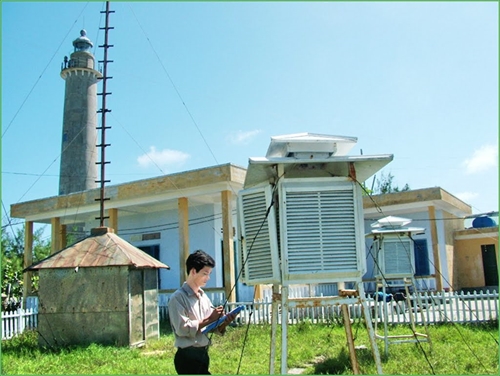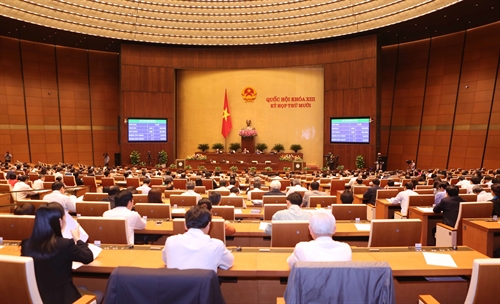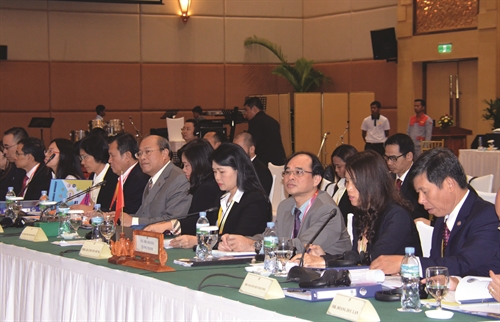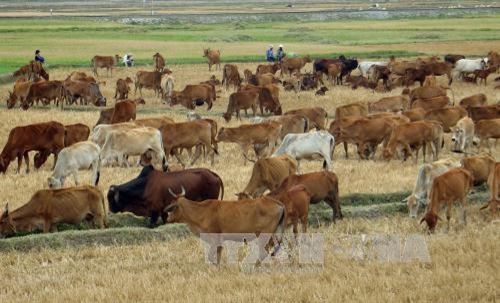From July 1, the new Law on Hydro-meteorology (the Law) will take effect, superseding the 1994 Ordinance on Operation and Protection of Hydro-meteorological Works.
The 10-chapter and 57-article Law regulates all hydro-meteorological activities, including hydro-meteorological observation, forecast and warning; hydro-meteorological support and services; climate change monitoring; and weather modification. It applies to agencies, organizations and individuals, including also foreign ones, that participate in hydro-meteorological activities in the Vietnamese territory.
 |
| The hydro-meteorological station in Song Tu Tay (Southwest Cay) island, Truong Sa (Spratly) archipelagoes__Photo: Internet |
The Law underlines that the State will ensure resources for the construction, management and operation of the network of national hydro-meteorological stations, hydro-meteorological forecast and warning, climate change monitoring commonly serving socio-economic development, national defense and security, and natural disaster prevention and combat. It also lays down as a policy the diversification of funding sources for investment in hydro-meteorological activities. In light of this, the State will encourage organizations and individuals to participate in hydro-meteorological observation, forecast, warning, scientific research, technology transfer, and exploitation and use of hydro-meteorological information and data.
Hydro-meteorological forecast and warning
The Law has a separate chapter on forecast and warning activities, which are recognized as having great importance to socio-economic development.
In order to create grounds for related stakeholders to establish specific forecast and warning processes, the Law sipulates contents of forecast and warning activities, including: collection, processing, analysis and storage of hydro-meteorological, climate change monitoring and relevant information and data nationwide, regionwide and worldwide; making and issuance of hydro-meteorological forecast and warning bulletins; provision of hydro-meteorological forecast and warning information; instruction on the exploitation of hydro-meteorological forecast and warning information; and assessment of the quality of hydro-meteorological forecast and warning.
To ensure the quality of hydro-meteorological forecast and warning activities, the Law requires them to be conducted in compliance with relevant technical regulations and professional processes. Forecast and warning information must be regularly and promptly updated so as to catch up with developments of hydro-meteorological phenomena, be easy to understand and use and presented in Vietnamese. Organizations and individuals performing hydro-meteorological forecast and warning work will take responsibility for hydro-meteorological forecast and warning bulletins they have issued.
Though there has arisen over the past few years a demand for the participation of organizations and individuals from the non-state sector in hydro-meteorological forecast and warning activities, current regulations says nothing about this issue.
The Law now affirms that organizations and individuals, including foreign ones, may take part in hydro-meteorological warning and forecast activities. However, in order to ensure consistency in state management of hydro-meteorological activities, the Law stresses these entities must meet certain conditions on professional capacity and qualification as well as physical foundations.
Specifically, foreign organizations and individuals must have appropriate physical and technical foundations; have the legal entity status and appropriate staffs, for organizations; possess a professional qualification in a relevant discipline and experience in hydro-meteorological forecast and warning activities, for individuals; lawfully operate or reside in Vietnam; and have employees who are fluent in Vietnamese or qualified interpreters.
The Minister of Natural Resources and Environment will be competent to grant, extend, invalidate and revoke hydro-meteorological forecast and warning activity licenses of organizations and individuals performing hydro-meteorological forecast and warning work in two or more provinces and centrally run cities or in provinces or centrally run cities outside the locality where such organizations are headquartered or such individuals reside; and of foreign organizations and individuals carrying out hydro-meteorological forecast and warning activities in Vietnam. Meanwhile, provincial-level People’s Committee chairpersons will be vested with the power to grant, extend, invalidate and revoke hydro-meteorological forecast and warning activity licenses of organizations and individuals performing hydro-meteorological forecast and warning work in their localities.
A hydro-meteorological forecast and warning activity license will be valid for up to five years.
Climate change monitoring
Chapter V of the Law contains provisions on the role of hydro-meteorology activities in climate change responses, contents of climate change monitoring, climate change monitoring database, and assessment of national climate. These contents does not overlap with provions on adaptation and mitigation of climate change of other laws.
Under Article 33 of the Law, climate change monitoring includes the following contents: building, management and exploitation of climate change monitoring stations and databases; collection of hydro-meteorological information and data from the observation at national and exclusive-use hydro-meteorological stations and relevant information and data; development of a standard national climate set; analysis, assessment and monitoring of indications of climate change; assessment of climate change impacts on natural disasters, natural resources, the environment, eco-systems, living conditions, socio-economic activities and inter-sectoral, inter-regional and interdisciplinary issues; assessment of solutions to adaption to and mitigation of climate change impacts on socio-economic development; assessment of national climate; and development of climate change scenarios.-








